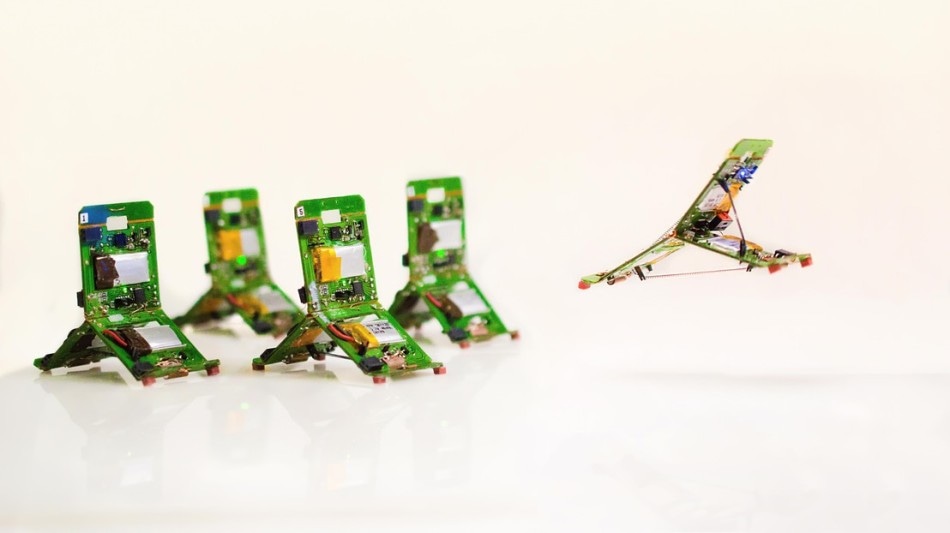Jul 11 2019
Inspired by ants, EPFL scientists have built miniature 10-g robots. The robots can communicate with each other, assign roles among themselves, and complete complicated operations together. These reconfigurable robots are not complex in structure, yet they can crawl and jump to examine uneven surfaces. The scientists have recently reported their work in Nature.
 Some tribots and one of them jumping (Image credit: ©Zhenishbek Zhakypov/2019 EPFL)
Some tribots and one of them jumping (Image credit: ©Zhenishbek Zhakypov/2019 EPFL)
Separately, ants only possess so much intelligence and strength. However, as a colony, they can employ intricate strategies to carry out elaborate tasks and escape larger predators. At EPFL, robotics scientists in Professor Jamie Paik’s Laboratory have replicated this phenomenon, creating miniature robots that exhibit minimal physical intelligence on an individual level but that are able to communicate and act as a group.
In spite of being modest in design and weighing merely 10 g, each robot has many locomotion modes to steer across any type of surface. As a group, they can swiftly detect and overcome hurdles and shift objects much heavier and larger than themselves. An associated research has been published in Nature.
Robots inspired by trap-jaw ants
These three-legged, T-shaped origami robots are known as Tribots. They can be put together in only a few minutes by folding a pile of thin, multi-material sheets, rendering them appropriate for mass production. Fully autonomous and untethered, Tribots are fitted with proximity and infrared sensors for communication and detection purposes. They could house a lot more sensors based on the application.
“Their movements are modeled on those of Odontomachus ants. These insects normally crawl, but to escape a predator, they snap their powerful jaws together to jump from leaf to leaf,” says Zhenishbek Zhakypov, the first author.
The Tribots imitate this catapult mechanism through a sophisticated origami design that integrates many shape-memory alloy actuators. Therefore, a single robot can carry out five unique locomotion gaits: horizontal jumping, vertical jumping, walking on textured terrain, somersaulting to clear obstacles, and crawling on flat surfaces—similar to these creatively tough ants.
Roles: leader, worker, and explorer
Regardless of having the same anatomy, each robot is allocated a particular role based on the situation. “Explorers” detect physical hurdles in their path, like valleys, objects, and mountains. After spotting a hurdle, they pass the information to the rest of the group. Then, the “leader” instructs. The “workers,” in the meantime, pool their strength to shift the objects.
Each Tribot, just like Odontomachus ants, can have different roles. However, they can also take on new roles instantaneously when faced with a new mission or an unknown environment, or even when other members get lost. This goes beyond what the real ants can do.
Jamie Paik, Professor and Robotics Scientist, EPFL
Future applications
In real-world situations, like an emergency search mission, Tribots could be deployed all together. Moreover, owing to their multi-locomotive and multi-agent communication skills, they could find a target speedily over a large surface without depending on visual feedback or GPS.
Since they can be manufactured and deployed in large numbers, having some ‘casualties’ would not affect the success of the mission. With their unique collective intelligence, our tiny robots can demonstrate better adaptability to unknown environments; therefore, for certain missions, they would outperform larger, more powerful robots.
Jamie Paik, Professor and Robotics Scientist, EPFL
This study is the result of a joint partnership between EPFL and Osaka University.
Robot-ants that can jump, communicate with each other and work together
(Credit: EPFL)